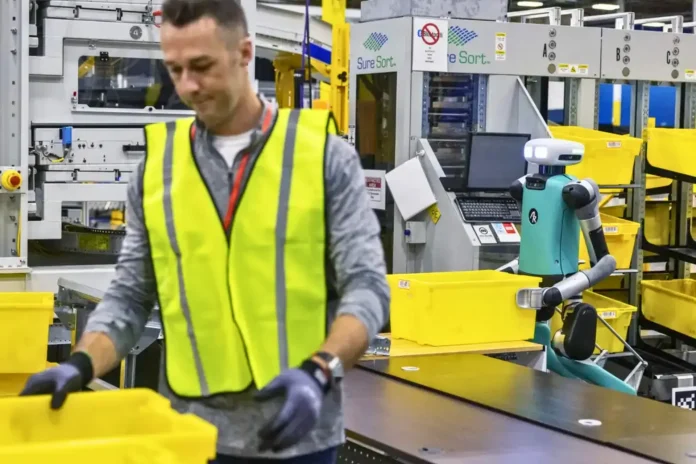Amazon, the e-commerce mega power, has quietly assembled a formidable force to deploy a strong 750,000 Amazon robots in warehouse. These are not the shiny, humanoid robots from science fiction but rather hardworking, specialized machi automating tasks within Amazon’s extensive fulfillment network. Let’s delve into this robotic revolution’s background, present, and future, exploring its impact on AI, the workforce, and our relationship with technology.
A History of Amazon Robots in Warehouse
Amazon’s robotic journey began in 2012 with the investment of Kiva Systems, a pioneer in mobile robotic fulfillment solutions. These autonomous bots navigate warehouse aisles, packing and boxing products for human pickers, significantly increasing efficiency. Over the years, Amazon has diversified its robotic field workers, incorporating fixed robotic arms for palletizing and sorting, drones for inventory management, and even autonomous delivery vehicles like Scout.
The Present with Efficiency, Optimization, and AI Supremacy
The 750,000+ robots currently deployed across Amazon’s warehouses with the partnership of agility robotics handle a vast array of tasks, from packaging products to labeling shelves. This automation has undeniable benefits: enhanced efficiency, reduced errors, and faster delivery times. But the implications extend beyond just logistics. With each robot, Amazon gathers invaluable data on movement, inventory, and customer behavior, fueling its ever-evolving AI algorithms. This data-driven approach is central to Amazon’s ambition to become a leader in artificial intelligence.
Competition and Ethical Considerations
As robots become increasingly sophisticated, the question of their future role in Amazon’s workforce becomes essential. While some jobs may be replaced, others will transform. Humans will increasingly collaborate with robots, focusing on higher-level tasks like supervision, maintenance, and problem-solving. This human-robot merger poses challenges and opportunities, demanding careful consideration of ethical implications like job displacement and the potential for bias in AI algorithms.
Beyond its operations, Amazon’s robotic ambitions have broader implications for the future of work and technology. Its influence on other industries, AI standards development, and large-scale automation’s potential societal impact are all topics demanding open discussion and responsible action.
The army of amazon robots in warehouse is a steppingstone towards a future deeply connected with artificial intelligence. While the benefits of automation are undeniable, this technological step necessitates a focus on human well-being, ethical considerations, and responsible AI development. As we navigate this robotic revolution, ensuring that technology serves humanity rather than the other way around remains essential. The future of Amazon’s robot army is indeed fascinating, but it’s the future we build together that truly matters.



